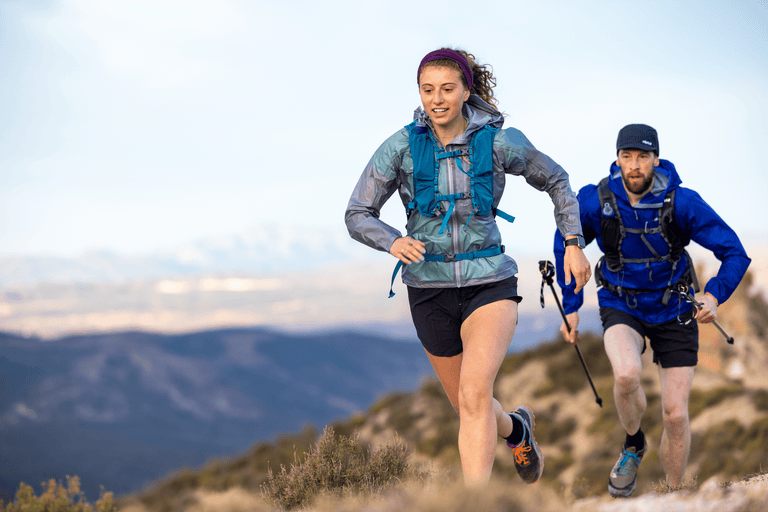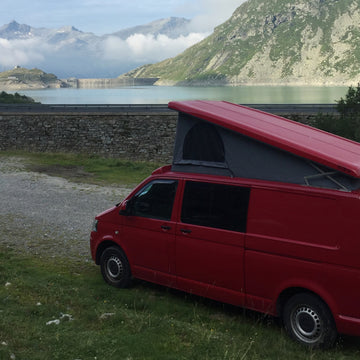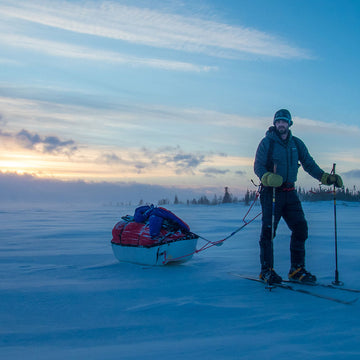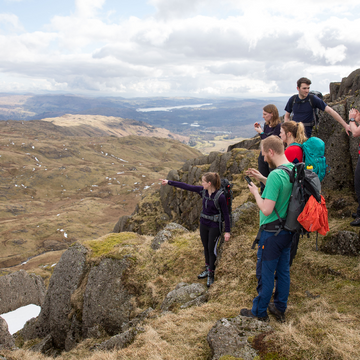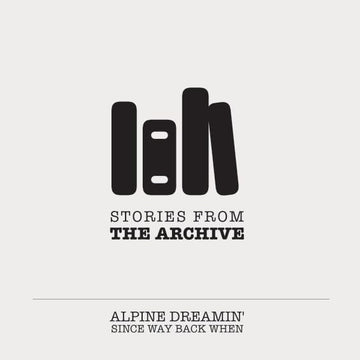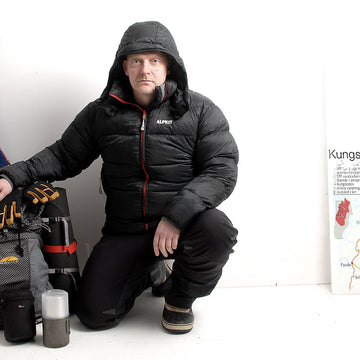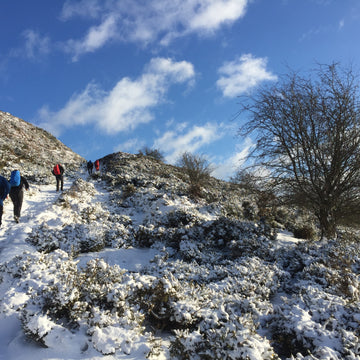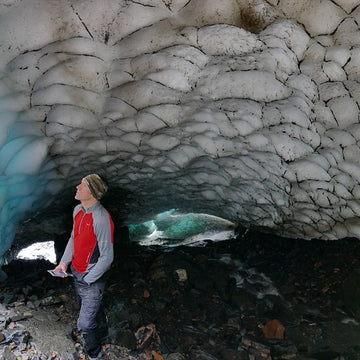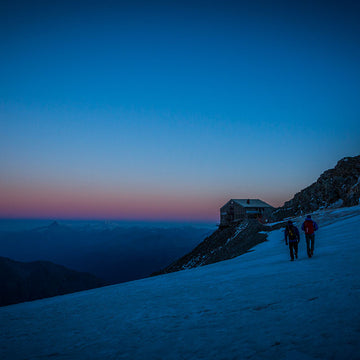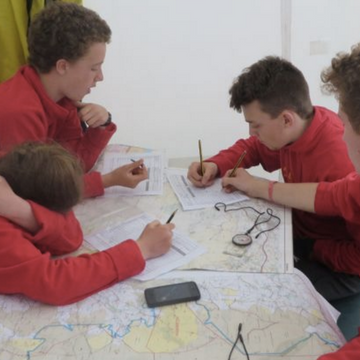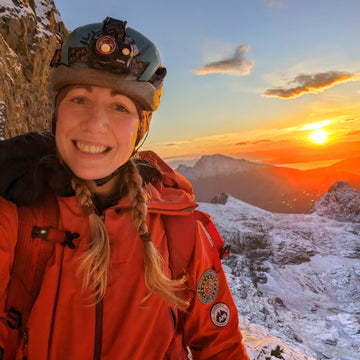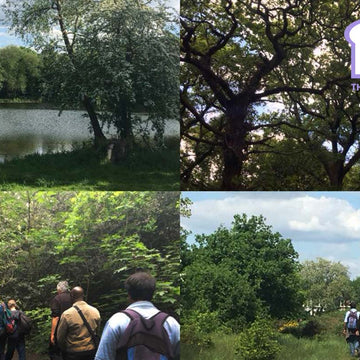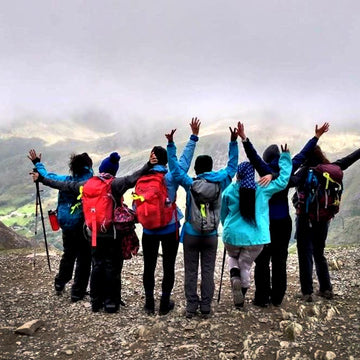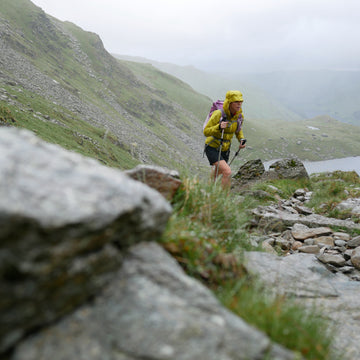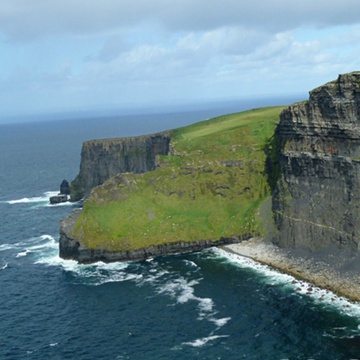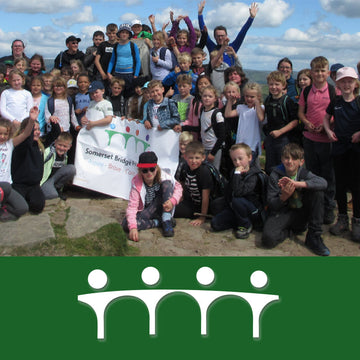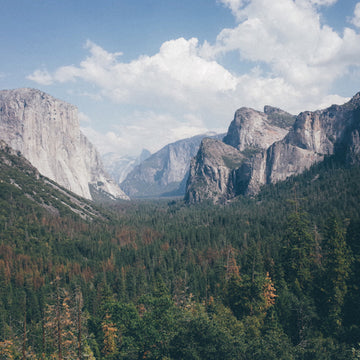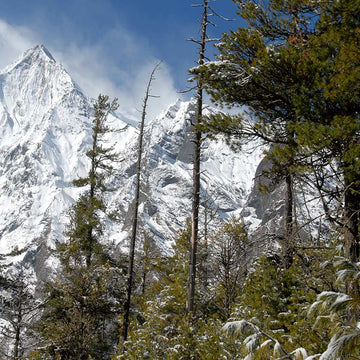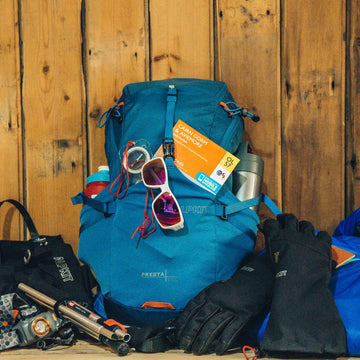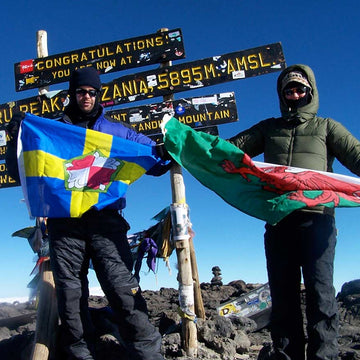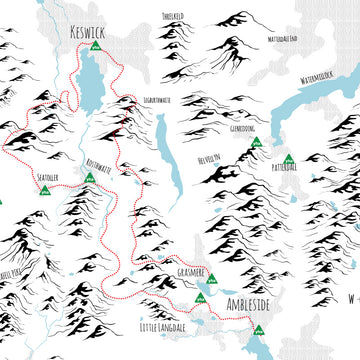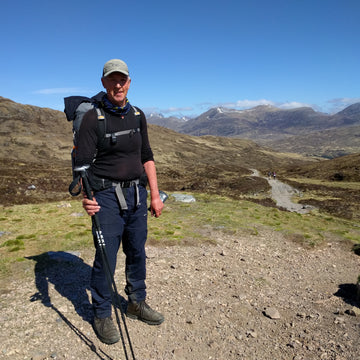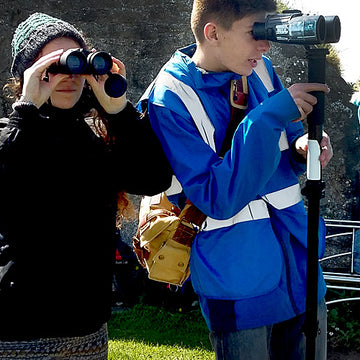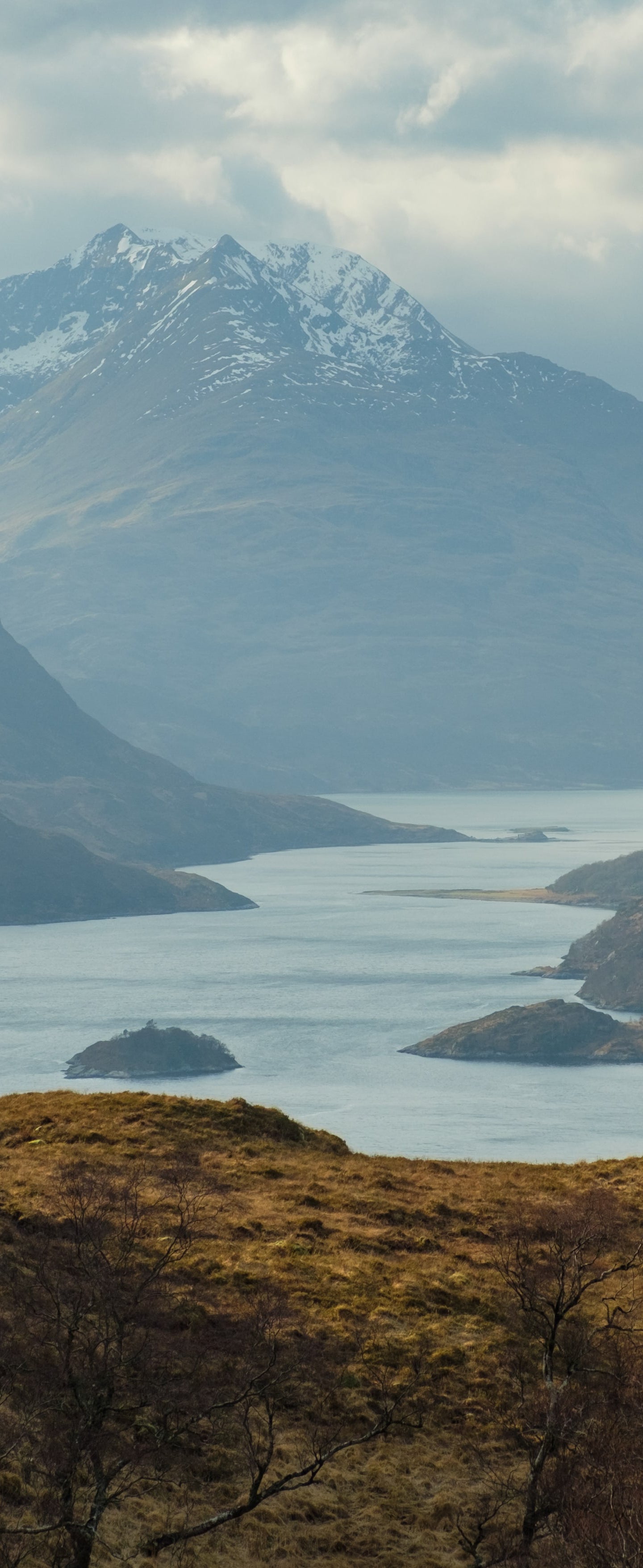
The Farthest Shore by Alex Roddie: Tales of coastal exploration.
You are about to read an extract from 'The Farthest Shore' by Alex Roddie. Available soon from Vertebrate Publishing
Chapter 6
Day 10: 15 February 2019
Somewhere to my left there was a huffing sound. I heard it distinctly over the rhythmic murmur of the wavelets coming in off the loch and splashing against the shore. I looked and there was an otter floating there in the swell, surrounded by garlands of drifting bladderwrack, its blunt little whiskered nose pointing in my direction. It blinked and huffed again.
The otter watched me for a few seconds more and then dived. I hadn’t had time to get my camera out of its bag, but now I stood there with camera at the ready, waiting for it to surface again. When it popped its head back above the surface, closer to me this time, it was soon joined by two other individuals. The three floating otter heads bobbed there not five metres away; they looked quizzically up at me, then they each glanced at each other, as if seeking a consensus on whether this strange backpack-toting stranger was a threat or a friend. The first one huffed for a third time and they all dived.
As I walked on along the shore path I kept looking down at the water, hoping to see the otters again. Sure enough, after a few minutes I saw the three otters surfacing once more; they’d followed me underwater, and now paddled along on the surface, keeping pace with my strides. They dived. They surfaced again. Sometimes I saw all three, but more often it was just one animal – the first, I imagined, although to my untrained eye all three looked alike. I wondered how I looked to them.

The lighthouse at Ardnamurchan Point at the start of my February 2019 journey © Alex Roddie
The shoreline path from Barrisdale to Kinloch Hourn was a route I had walked several times before. It was the shortest stage of the Cape Wrath Trail, but on my first CWT I’d found it surprisingly tough thanks to the atrocious weather. This time there was a lot less water cascading down the hillsides and I even had the side zips of my Páramo trousers open for ventilation in the warm conditions.
I didn’t stop at Kinloch Hourn. This tiny cluster of houses at the head of the loch is the location of the only public telephone on the Knoydart section of the CWT, but it had been out of action for months, ever since a landslide had wiped out a section of road – along with the phone line – in November 2018. I’d tried to use it on my trip in December, but the ancient phone wouldn’t take my coins, and soon a camo-clad stalker had pulled up in his six-wheeled ATV and cheerfully told me that all communications with the outside world had been cut off. I chuckled as I remembered his gleeful rant about the inefficiency of the Highland Council. Just before this trip I’d found out that plans to fix the road (and the phones) were due to get going ‘at about Easter’. Perhaps the Knoydart Walden Zone had a way of defending itself, reinforcing its seclusion, but one person’s digital detox is someone else’s disrupted livelihood. I couldn’t imagine having a conversation with the stalker about the healing value of time spent in seclusion away from the internet. We lived in different worlds, and that was fine.
At 699 metres above sea level, Bealach Coire Mhalagain is the highest point on the regular line of the CWT. That’s well below most of the summits nearby, but high enough that I’d lost some sleep over it during the planning phase. In summer it’s an exposed notch between mountain peaks, with plenty of rough, off-path walking on both sides of the col. I’d found the descent particularly tricky on my first CWT. Steep ground combined with compass-in-hand navigation is a recipe for caution at any time of year, but in winter, when the north-east-facing bealach would probably be banked out with snow, perhaps even corniced, it represented a major challenge. Any steep, hard snow on the far side would require ice axe and crampons. Despite the intensity of the recent thaw, I expected to find at least some snow lurking on the other side.
The warmth of the afternoon surprised me. It was feeling a lot like spring. With my increased pace on this section I started to feel that familiar pull of bigger miles and sunnier trails – a rising of the hiker’s sap that I feel every year, usually from around March or April. It’s a transformation as inexorable as the metamorphosis of caterpillar to moth, or the unfurling of hawthorn buds. Invariably I dust off the box labelled ‘ultralight gear’ and start dreaming about big days in rugged Alpine landscapes with the sun beating down on me. I had never felt this particular urge in February before. In February I was usually still fantasising about perfect winter conditions.
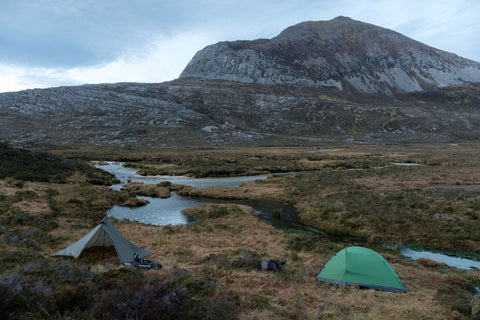
A wild camp with Chris Townsend on the Torridon section of the trail © Alex Roddie
After the relative civilisation of Kinloch Hourn, the wilder expanse of Coire Mhalagain felt like an opportunity to breathe deeply again. The good path I’d been following disappeared at the river, and I struck uphill through a maze of moss-covered boulders and peat hags, keeping an eye on my map but not paying too much attention to navigation. To my left, white water foamed over cataracts, but water levels remained low, probably because most of the snow had now melted. Above, dun slopes rose to rockier heights where the summit of The Saddle (1,010 metres) hid somewhere behind the foreshortening perspective of snow-flecked crags. So little snow was left now that the latticework of white looked delicate and fragile, as if meticulously painted with the tiniest brush. Fine strokes of snow underlined cliffs and highlighted gullies, connecting a tenuous patchwork of blobs and shapes that would look different again in the morning after another twelve hours of hard melt. As I stood there and stared at this complex scene, more intricate than any drawing, I marvelled at the sequence of events – and blind entropy – that had led to its creation.
I wandered slowly uphill. The afternoon waned more quickly than I had expected, and with the fading of the light came the cloud, spreading from one corner of the sky to cover me with a uniform blanket of grey. Suddenly the warmth was gone and with it the fleeting sense of springlike promise. It had been an illusion – or perhaps a premonition. Time to find somewhere to camp and worry about Bealach Coire Mhalagain tomorrow.
The sound of rain drumming against the flysheet woke me with a start. I lay there motionless in my sleeping bag. Inches away from my face, I saw the fabric of my shelter leap and vibrate as if being pounded by an angry pianist. Somewhere in the distance, the storm growled – that deep, monstrous roar starting far away and gradually getting closer, rampaging over the landscape until it collided with my tent and I felt my shelter deform, thrashing to and fro, straining to deflect the gust.
Where the hell had this come from? I felt the anxiety burn. This had been one of my great fears on this trail: a winter storm that would chew me up and spit me out.
I sat upright in my sleeping bag, suddenly feeling constrained and alarmed. Blackness. I struggled to free an arm from my hood and grope for my head torch in the dark. The sudden beam, blinding me for a moment, cut through a haze of flying condensation droplets that had been shaken free from my flailing tent. I saw the central pole tilt and bend. In an instant I was hugging it, wrapping myself around it with both arms while I felt the gale moulding the tent’s fabric to my body, pushing against me, an irresistible force. The mountain shrieked.
The cocktail of emotions coursing through me was one rarely to be experienced in our controlled and cosseted everyday lives. Near-religious awe of nature’s power warred with a primal fear. Although I trusted my tent, trusted the strong central pole, trusted the tent pegs anchoring it to the ground, I’d rarely felt so exposed, so small. It does a person good to be reminded from time to time that they are no more than a speck – that ultimately nature is the boss.
Last time I’d camped high on a mountain in a storm, I remembered, the urge to plug myself back into the web and seek any comfort I could, any sense of connection at all, had been overwhelming. I’d flinched away from this mirror into my own soul. This time I looked for something within me to hold on to. I found it almost immediately.
The mythology of my childhood features a few particularly strong images. One is my dad’s boat, Yorrel, that symbol of perfect solitude embedded within a landscape of both natural beauty and cocooning isolation. I thought back to all the stories, including the ones I’d told back to him at his deathbed. There had been storm as well as starlight.
The memory I held in my mind of him telling this story was one I couldn’t be sure ever actually happened, but it was no less strong for all that. I remembered our living room at the old house in Caxton, where I’d lived for the first sixteen years of my life. I remembered the floral wallpaper, the heavy green curtains, and the old armchair in the corner that Dad used to sit in. Mum would be lying on the sofa reading a magazine. James would be playing with some Lego and I’d be sprawled on the carpet staring at the ceiling. The light in that room never seemed bright enough; it always felt like it was late evening, lit by the dim glow of electric lamps under heavy shades, or at least it did when I revisited it in my memories.
‘Did I ever tell you and James about that time on the boat with the big storm?’
My ears pricked up. I’d heard the story before, of course, but I wanted to hear it again. I was probably about ten and therefore in a phase of being obsessed by boats and adventures on the water.
‘Nope.’
I pictured my dad sitting in his chair – not my dad as he’d looked lying in hospital dying of cancer, but my dad as a much younger man. The default Ian Roddie as I always pictured him: about fifty years old, fit and sinewy, wearing old jeans and a pale blue shirt open at the collar, an unruly shock of black hair going white just above each ear, skin tanned from hours spent out in the garden. A sparkle in his eye that I would only much later recognise as gratitude.

Approaching the end of the trail © Alex Roddie
‘Well, it was October, and a gale blew in as they often did. I’d been on the boat for two days already. The wind was so strong that four-foot waves were hammering against the bow. I thought the boat was going to drag her anchor but she managed to stay put somehow. I went up on deck to secure the rigging. Madness up there – spray flying everywhere, waves breaking over the deck, could hardly see a thing.’
He smiled at me and James. Of course he knew that he’d told the story many times before, and that we wanted to hear it anyway.
‘Just me and the boat, me and the storm. The noise was tremendous! Like a jet engine going ahead. Then I felt something huge coming towards me. Still can’t explain how I felt it before I saw it, but then there it was, a massive great big trimaran that had broken free of her moorings and was being tossed about in the swell like a rubber duck, coming straight towards me.’
James gasped, wide-eyed. The image of this huge, three-hulled boat loose and dangerous, driven by nothing but nature’s energy, was illuminated as vividly in my mind as the pencil sketch Dad had drawn, years later, of Yorrel tilting in that same swell – a picture hanging framed on our living-room wall.
‘It just went straight past, silent as a ghost, but enormous. I could have reached out and touched it. Nobody on board, of course, and it was gone in seconds. The next day it was found washed up on the mudflats.’
In my young mind, that storm had become the storm. All other storms I later read or heard about, all other storms I experienced myself, were subconsciously compared to that image of the flying trimaran and the lone mariner battling against the gale to secure his vessel. But perhaps, I realised, it was a naive and childish image of solitude. I loved the story, but perhaps I’d outgrown it.
I lay there in my sleeping bag, watching the tent buckle and bend around me in the light of my head torch, hearing the mountain scream and shout. I wondered if there was a monster out there, even now cannoning towards me, a loosed trimaran looking for a target. You couldn’t control the uncontrollable. But just as my dad had trusted Yorrel completely, the yacht he had designed from scratch and built with his own hands, so I trusted my own ship moored fast in my own storm. I knew what I could rely on. I knew what I had to be anxious about and which worries were pointless.
What did solitude even mean? The concept had been reassuringly simple to me at the start of this trail, but it seemed complicated and full of questions now. Perhaps there was no such thing.

Yorrel and River Deben, 1970s © Ian Roddie

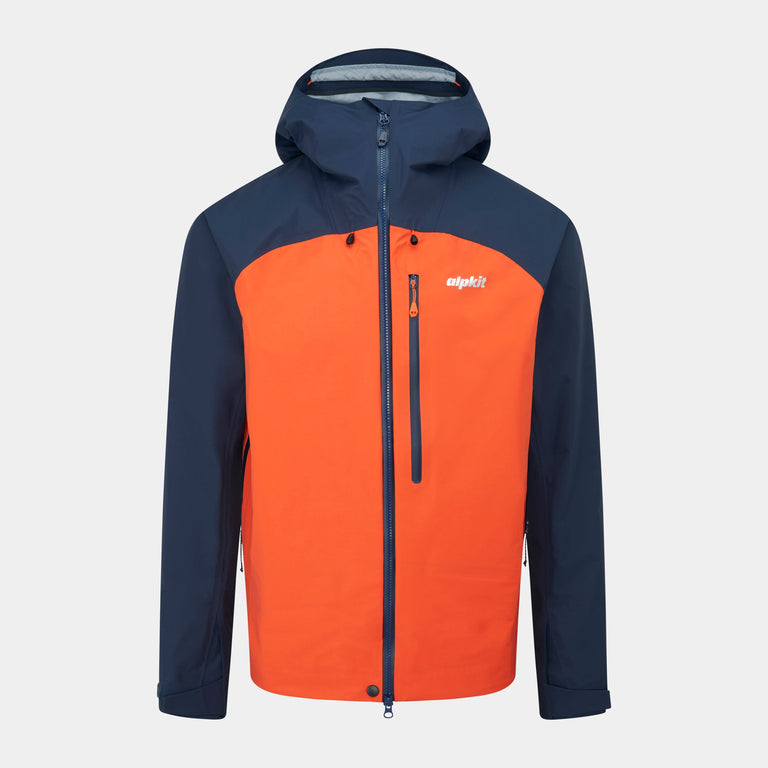
![Definition [Mens]](http://alpkit.com/cdn/shop/files/Definition-men-2.jpg?v=1760030579&width=768)

![Definition [Womens]](http://alpkit.com/cdn/shop/files/Definition-women-3.jpg?v=1764162500&width=768)
![Balance [Mens]](http://alpkit.com/cdn/shop/files/balance-mens-2025-reef.jpg?v=1764160608&width=768)
![Balance [Mens]](http://alpkit.com/cdn/shop/files/Balance-mens-2.jpg?v=1765290834&width=768)
![Balance [Womens]](http://alpkit.com/cdn/shop/files/balance-womens-2025-black.jpg?v=1764160433&width=768)
![Balance [Womens]](http://alpkit.com/cdn/shop/files/Balance-womens-3.jpg?v=1765272052&width=768)
![Fortitude [Mens]](http://alpkit.com/cdn/shop/files/fortitude-mens-2025-alder.jpg?v=1763659494&width=768)

![Fortitude [Womens]](http://alpkit.com/cdn/shop/files/fortitude-womens-2025-alder.jpg?v=1763659499&width=768)

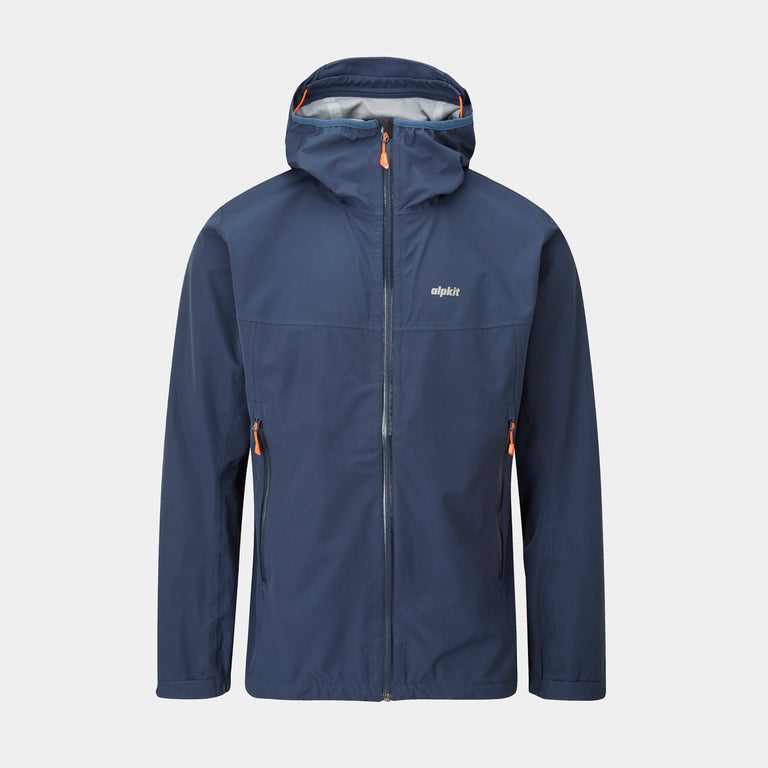
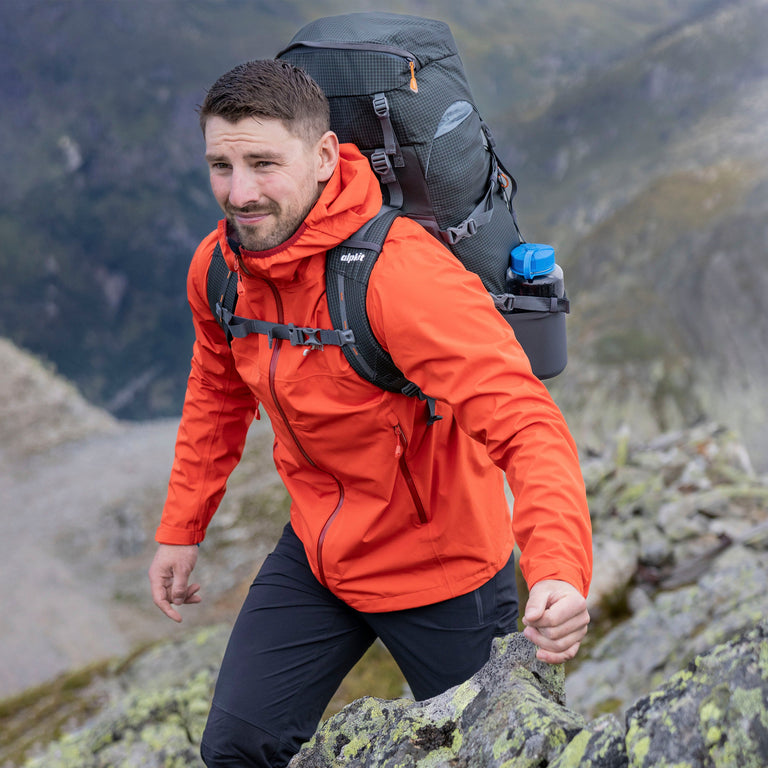
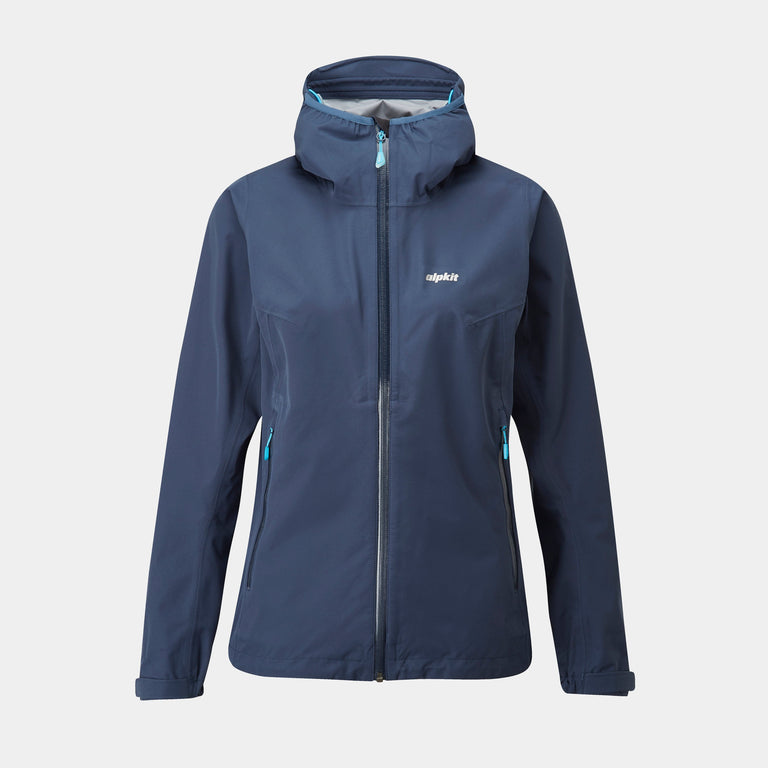
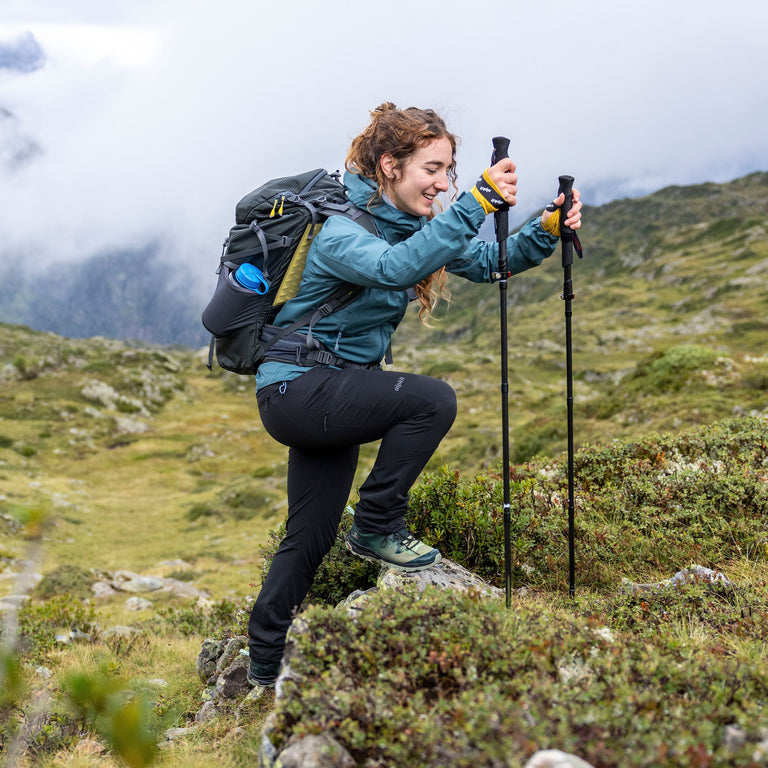


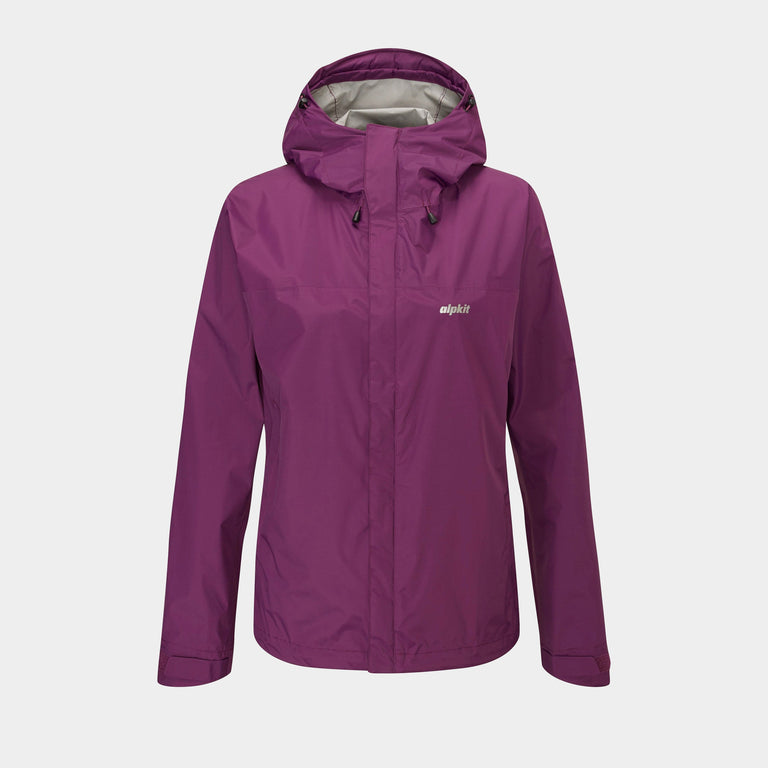
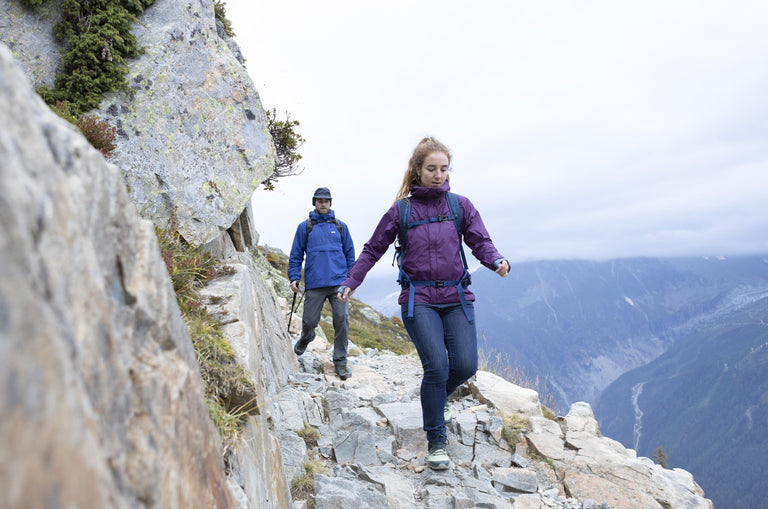
![Gravitas [Mens]](http://alpkit.com/cdn/shop/files/mens-gravitas-2025-chilli.jpg?v=1764948171&width=768)
![Gravitas [Mens]](http://alpkit.com/cdn/shop/files/gravitas-location-1-RETOUCH.jpg?v=1765452161&width=768)
![Gravitas [Womens]](http://alpkit.com/cdn/shop/files/womens-gravitas-reef.jpg?v=1722461253&width=768)
